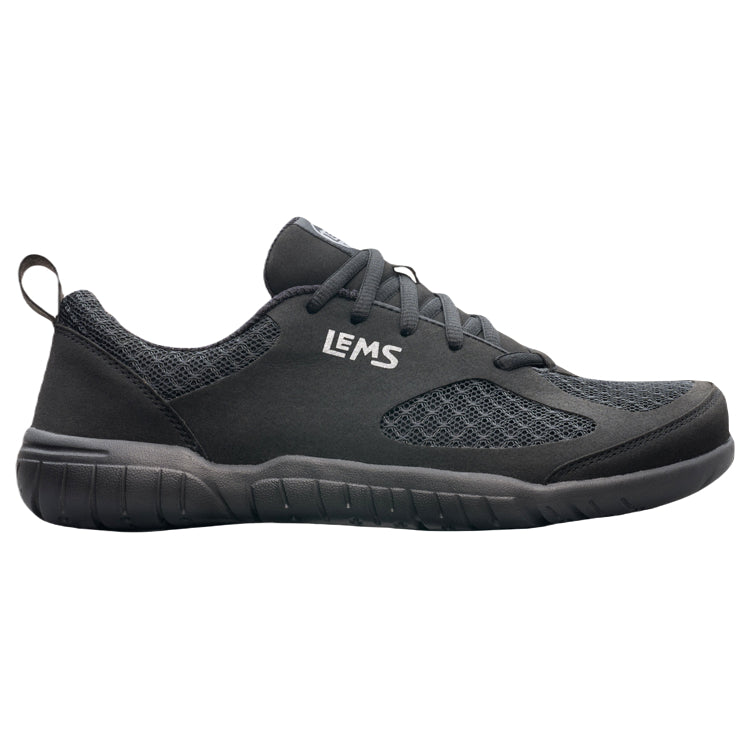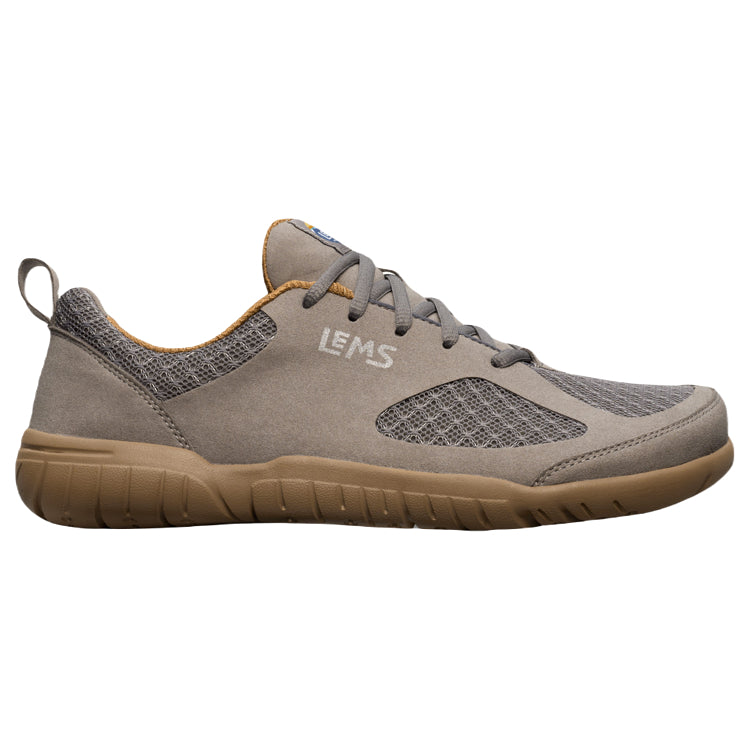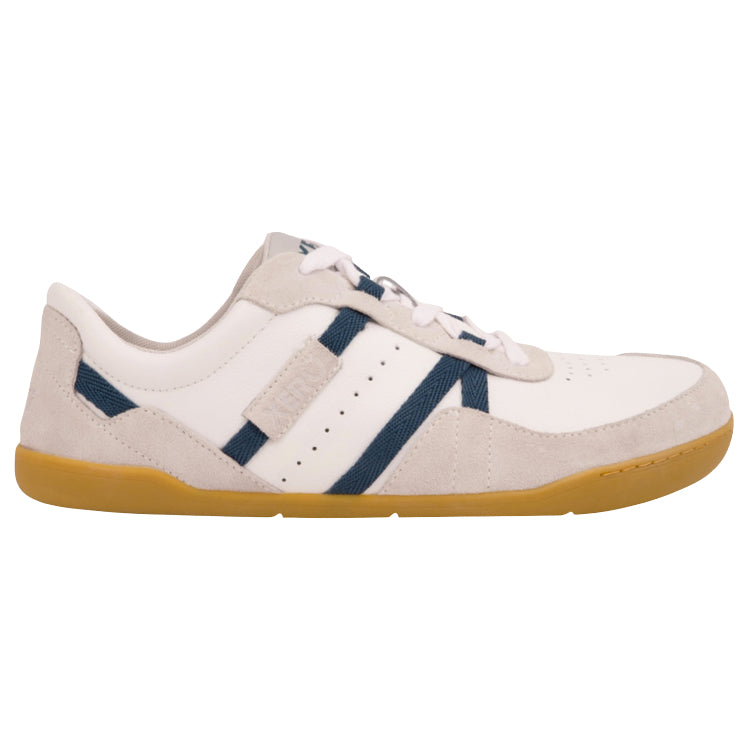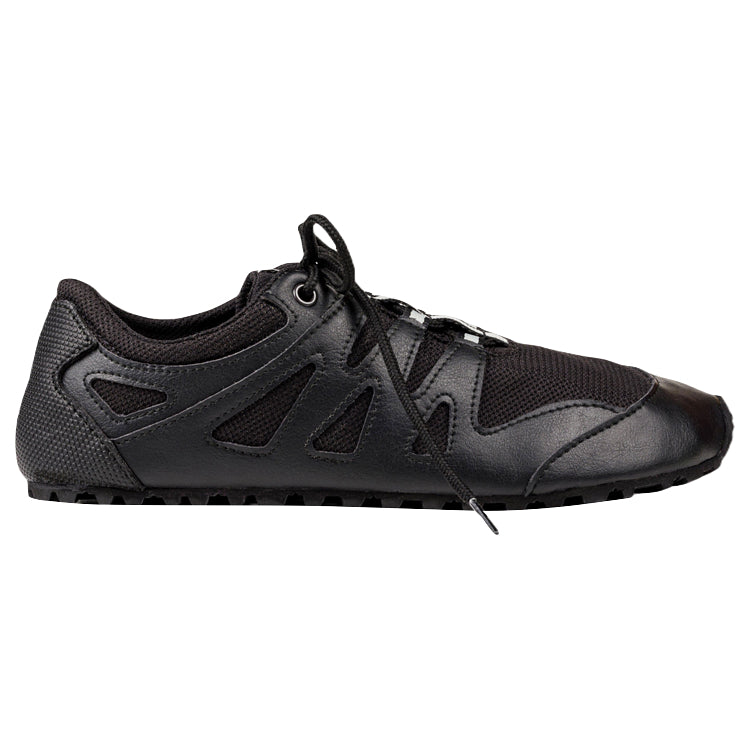
Toe spring is a design inclusion or element present in most conventional footwear, including athletic shoes. It’s touted as a positive feature (it’s said to assist in the toe-off phase of walking and running), but in reality, it is neither helpful nor necessary, and is, in fact, problematic for the foot and toes. Defined by the ramping or elevating of the toes above the ball of the foot, toe spring is a major contributing factor in a variety of foot and toe ailments. The shoe industry standard for toe spring is 15 degrees, which means that most shoes available to consumers today hold the toes in an unnatural, extended position for prolonged periods (given that most of us wear our shoes for many consecutive hours each day).
There are, however, two main types of toe spring (rigid vs. flexible) that you should be aware of, and they are not equal in terms of their effects on the foot. One type of toe spring (rigid) is far worse than the other type of toe spring (flexible). Shoe soles that incorporate rigid, inflexible toe spring essentially immobilize your toes in extension and contribute to tight, shortened toe extensor muscles and tendons and, ultimately, for many people, crooked toes, such as hammertoes. This type of toe spring also contributes to various forms of ball of foot pain, including neuromas, capsulitis, and sesamoiditis. This is due to the fact that rigid toe spring causes a shifting of the forefoot fat pad away from its usual, protective location beneath the metatarsal heads. Rigid toe spring usually accompanies thick soles, and the thicker the sole, the more rigid the toe spring. The rigidity of the toe spring also has a lot to do with the type of sole material used.
Some shoes appear to have toe spring but yet possess a relatively thin and flexible sole. This type of toe spring, which we call “flexible” toe spring, is usually far less problematic or injurious than rigid toe spring, as it can often be easily compressed out when weight bearing (e.g., standing, walking, running, etc.). Flexible toe spring is sometimes included in minimalist shoes and is often a result of how the shoe’s upper is constructed (i.e., it's simply a byproduct of the manufacturing process). Again, it’s not usually a problem, provided the sole of the shoe is thin enough and flexible enough to be flattened out by body weight alone.
-
Helpful Tip: Most toe spring (both flexible and, in some cases, rigid) can be eliminated or at least minimized by folding the sprung part of the shoe (i.e., the part of the sole that sits underneath the forefoot) back onto the rest of the shoe’s sole and placing the shoe in this configuration under a heavy object, such as a bookcase or couch, for 24-48 hours.
We should also note that heel elevation (i.e., the lifting or positioning of the heel above the ball of the foot) is another design inclusion present in conventional footwear that can exacerbate or compound an already problematic situation at the ball of the foot in shoes that possess rigid toe spring. Adding heel elevation to the mix creates an even greater likelihood of developing tight toe extensor tendons, as the reduced angle between the toes and the rest of the foot leads to a shortening of these tendons and a contraction of the muscles they are attached to. Also, the greater the heel elevation, the greater the force (of bodyweight) that gets routed directly through vulnerable ball of foot structures, such as the nerves and blood vessels located on the underside of the foot, but also the metatarsal heads, which are prone to fracture when not protected by the forefoot fat pad. Combining rigid toe spring and heel elevation with footwear that, through its tight, tapering toe boxes, also pinches the metatarsal heads together leads to the perfect storm of factors acting upon the ball of the foot.
Because of the long-term foot health risks associated with footwear that incorporates rigid toe spring and other harmful design elements, we highly recommend transitioning to men’s and women’s foot-healthy footwear, even if you’ve yet to experience any negative side effects from conventional shoes. Foot problems tend to develop slowly, over time, and most chronic foot and toe conditions become increasingly difficult to treat and fully resolve after decades of wearing conventional footwear. Remember: Any degree of rigid toe spring is excessive, so we encourage you to seek out footwear that is supremely flexible in the sole, flat from heel to toe, and sufficiently wide in the toe box to accommodate natural toe splay.

WANT TO IMPROVE YOUR FOOT HEALTH?
Let the team at Natural Footgear help you! Subscribe to our newsletter for the latest offers and helpful info, and sign up for our FREE email courses on various topics and foot health conditions.
Sign Up →
Want to Improve Your Foot Health?
We are here to help you every step of the way. Get our newsletter for the latest offers and helpful info, and sign up for our FREE email courses on various topics and conditions, including bunions, hammertoes, neuromas, plantar fasciosis, shin splints, ingrown toenails, and more.
Sign Up →
 One question that we receive from readers from time to time is the following: “Are maximalist shoes good for the feet?” Though opinions may vary on what constitutes maximalist footwear, we at Natural Footgear would categorize any athletic or casual shoe with significant padding or material under the foot’s sole as maximalist. Our feet and footwear philosophy is quite clear, and one of the principles that we believe in most...
Read more
One question that we receive from readers from time to time is the following: “Are maximalist shoes good for the feet?” Though opinions may vary on what constitutes maximalist footwear, we at Natural Footgear would categorize any athletic or casual shoe with significant padding or material under the foot’s sole as maximalist. Our feet and footwear philosophy is quite clear, and one of the principles that we believe in most...
Read more











